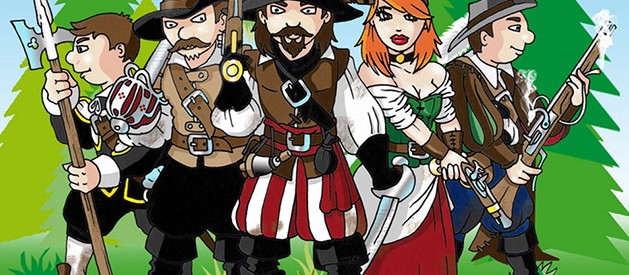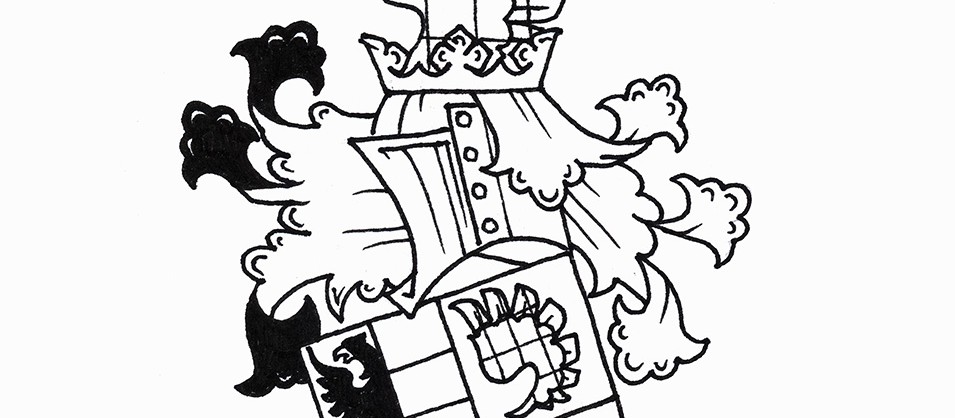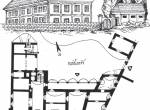
The educational journey of the robber Stetka
A nature trail around the surroundings of Štětí for the whole family, introducing the history and picturesque nature, industry and agriculture of Štetsko. The legendary robber Štětka and his four-member team are guiding the tour, giving information on a marked circuit starting from
In the old days of the Thirty Years' War, the robber Štětka was the master of the deep forests, fields and hillsides around the town of Štětí. Today, his home is the former Mordloch Cave, hidden away from people in the middle of the Stračen forests. Who knows him in the region. He protects the poor and honest, and justly punishes dishonesty and avarice. He has walked this land many times. He knows every road and footpath here.
During your adventurous journey with the robber Stetka you will come across educational boards that will tell you all about the history, nature, fauna and flora, industry and agriculture of the local region or visit the mythical cave Mordloch of the robber Stetka. You can also try out a discovery competition Following the footsteps of the robbers or robber geocaching.
Stops

Snědovice
HISTORICAL FAMILIES IN THE REGION OF STETTIN
Wolves from Kvítkov
In the second half of the 15th century, the Vlkove family of Kvitkov began to build their property in the local landscape in the Obrtka valley. Snědovice came into the possession of the knightly family of the Vlks of Kvítkov in the second half of the 15th century and they successfully farmed here for almost 200 years.
Rod Clary
In 1675 Johann Clary was granted citizenship in the Czech Kingdom and in 1694 he was promoted to the status of count. He had a new Baroque castle built in Snědovice in place of the dilapidated Renaissance fortress, completed around 1680. After his death, his son had him buried in a tomb next to the entrance to the church in Chcebuzi. His son and heir, Jan Vratislav Dezider, Count of Clary, Colonel of the Wallis Infantry Regiment, is known for his tragic death, shot by his servants and subjects in 1720. To commemorate this event, the so-called "Count's Chapel" stands at the site of his killing above the village of Stračí.
Kaplířová from Sulevice
A Czech noble family, originally lordly, documented from the first half of the 14th century. They owned estates in northwest Bohemia (Libochovany, Sulejovice, Tuchořice). Kašpar Kaplíř of Sulevice participated in the Estates uprising. His grandson Zdeněk Kašpar was an imperial general, promoted to the rank of count in 1676, and in 1683 he led the defence of Vienna during the Turkish siege. The family died out at the end of the 17th century.
Vilém Slavata from Chlum and Kosumberk
Vilém Slavata of Chlum and Kosumberk was a Czech nobleman and writer. He supported the Catholic Church, which earned him the title Purgrave of Karlštejn and Royal Governor of Bohemia. In 1618, together with Jaroslav Bořita of Martinice, he was expelled from Prague Castle during the Second Prague Defenestration. He stayed in Passau until 1621 and then returned to the Kingdom of Bohemia, from that year he was also allowed to use the title of Imperial Count. He was an opponent of the Germanization of Bohemia during the Thirty Years' War. At the end of his life he wrote a book of memoirs, Historical Writing, comprising fourteen volumes.
The Five Peaks of Chýš and Egerberk
An old Bohemian vladyc family that came from three places in northern Bohemia. Václav Št'astný Pětipeský was one of the directors during the Estates Revolt, and in 1620 he was sentenced to death, a sentence later commuted to life imprisonment and loss of all property. The defeat on the White Mountain and the Thirty Years' War hit the family hard, and the last male descendant of the family died in 1661.
The Czernins from Chudenice
The Černíns of Chudenice are one of the most important and oldest Czech families. The founder of the Nedrahovice branch, Jan, the governor of the Vltava region, was the ancestor of all the Czernins, who fathered five sons and three daughters. The eldest son, Diviš, became governor of Prague Castle, joined the Estates as a Catholic and ended up on the scaffold. Humprecht also sided with the Estates, but later switched to the side of the victors. Heřman participated with his friend Kryštof Harant from Polžice and Bezdružice in a journey to Palestine and to the Turkish sultan. In 1620 he declared himself a victor and became the imperial governor of Old Town. In 1627 the brothers Heřman and Humprecht received the imperial and Czech count titles
The Czechs from Olbramovice
The Čejkovs of Olbramovice are a lordly family that branched out into many lines in the 16th century. The family owned Osek, Losiny. The holder of the Rataje estate, Jan Čejka, moved to Moravia during the Estates Uprising, where he became a director. After the defeat in 1620 he was thrown into prison at Špilberk, sentenced to death, which was changed to life imprisonment after the intercession of his friends and later abolished altogether.


